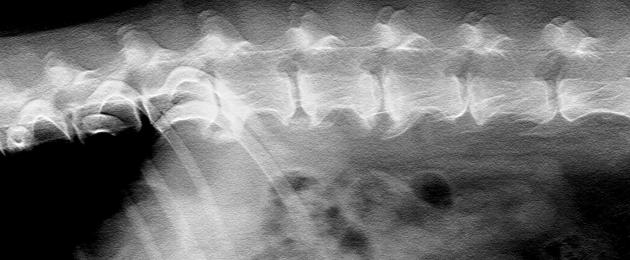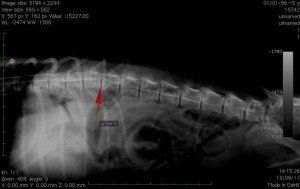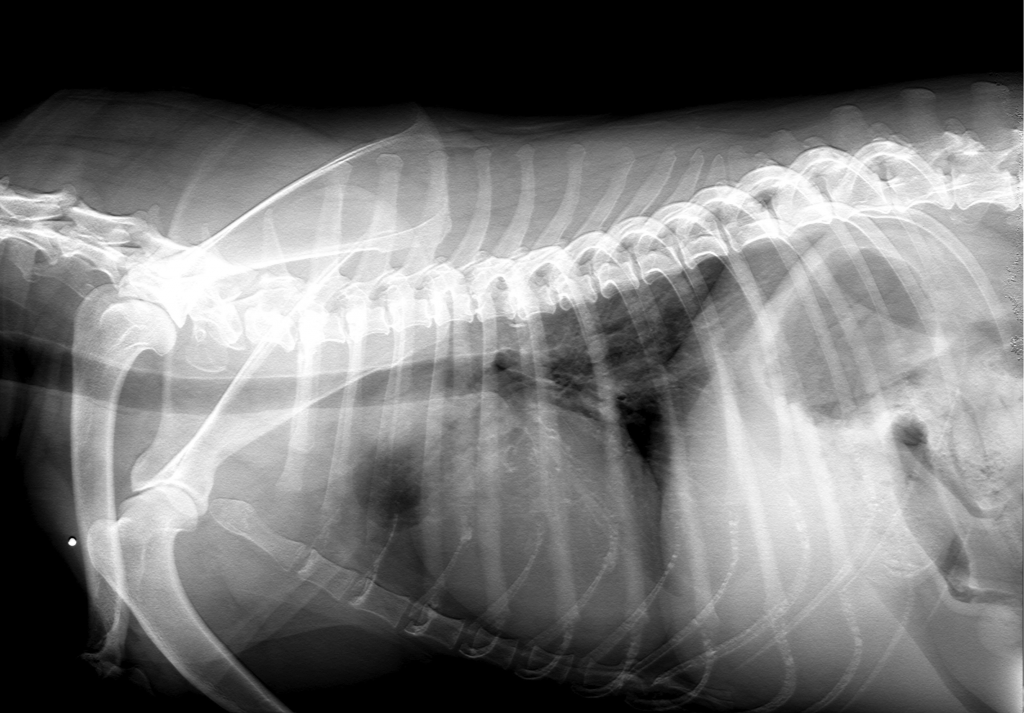X-ray is one of the most useful tools in medical imaging. It is a non-invasive method. While most images can be taken without tranquillization, it is sometimes necessary to sedate or anesthetize the patient.
X-rays are useful for visualizing the bony structures but also the soft tissues (abdomen, thorax).
X-ray of the spine:
In case of locomotor difficulties, it is possible to identify vertebral lesions. on a radio without preparation. The injection of contrast product in the spine (myelography) is sometimes necessary to visualize possible compressions of the spinal cord (herniated discs) which can be responsible for paralysis in your animal.
X-ray of limbs:
For the search for fractures but also the evaluation of various joint problems such as osteoarthritis or dysplasia.
Fracture of the femur and pelvis in a cat
Evolution of an odo-femoral dysplasia in osteoarthritis after a few years
Abdominal X-ray:
For the search for pathologies concerning the abdominal organs (liver, kidneys, spleen, digestive system, etc.)
Chest X-ray:
Visualization of the trachea, lungs, heart, etc.












